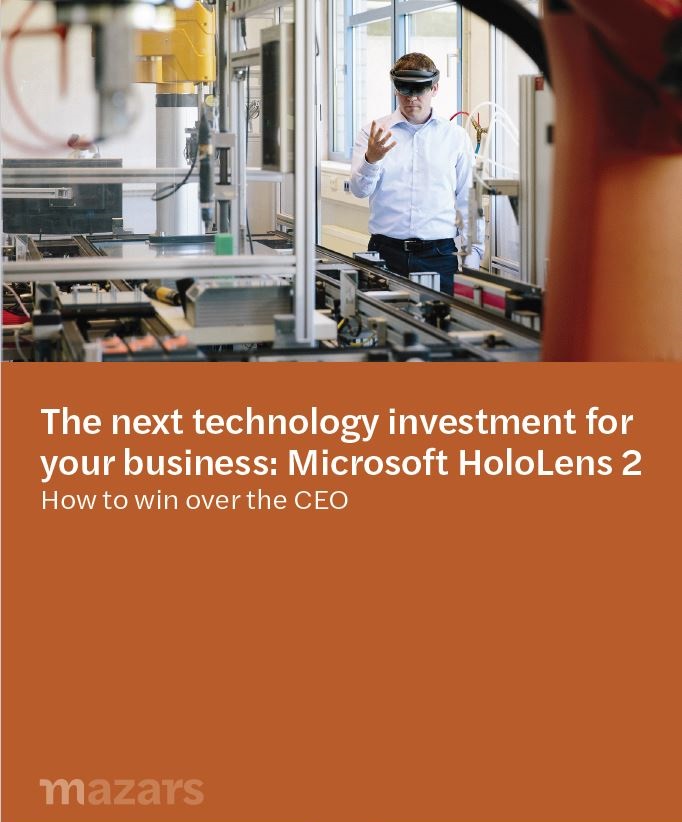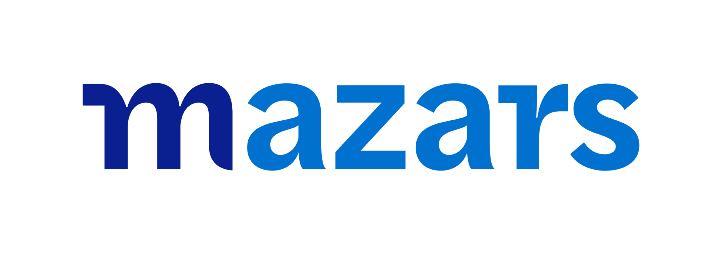What is HoloLens?
“HoloLens” and “mixed reality” are terms you may be familiar with but don’t fully understand.
HoloLens (and second-generation (HoloLens2)) is a headset developed by Microsoft that allows wearers to use hand gestures and voice commands to interact in a virtual environment. Mixed reality is a technology that combines aspects of both virtual reality (VR) and augmented reality (AR) to create a new immersive experience.
Whether in manufacturing, engineering, construction, healthcare, or education, HoloLens allows users to increase an organization’s productivity by enabling the creation of shareable guides and real-time remote collaboration with colleagues – all from a simple holographic canvas overlaid in a physical environment.
For manufacturing, HoloLens provides exceptional benefits and savings, particularly in time and costs. According to Microsoft’s research, manufacturers using HoloLens, in lieu of traveling with a client to an on-site location, can save up to $3,500 for their business per visit, potentially increasing revenue by 5% annually and reduce training time by 75% annually
(source: https://www.microsoft.com/en-us/hololens/industry-manufacturing?SilentAuth=1).
Here’s proof, from Microsoft, of HoloLens’ value.
Toyota used mixed reality with the goal of increasing operational efficiency. Initially, having to train employees to assemble new vehicles across North America meant conducting onboarding and classroom training in a localized setting. This traditional approach to training included having to spend time and resources annually to train workers to assemble new vehicles.
Instead, utilizing HoloLens Toyota was able to create Microsoft Dynamics 365 (D365) Guides and utilize remote assist to train workers quickly and efficiently, in real-time. This reduced the cost of training employees compared to traditional training methods.
(source: https://customers.microsoft.com/en-US/story/849867-toyota-motor-north-america-dynamics-365).
On-the-job guidance and remote collaboration are significant incentives to invest in HoloLens.
Employees on-site can review step-by-step guides to resolve many issues. A user simply needs to access the created guide in real time via HoloLens to work through issues without needing additional support.
In terms of investing in mixed reality, the benefits outweigh the cost. Employees improve productivity through accelerated learning and reduce errors via standardized guide documentation.
Consider the need to support a new hire on-site with a client. Maybe you’re performing maintenance on a vehicle or repairing an elevator. Traditionally, support would mean additional assistance physically on-site. This could result in increased costs for labor and services.
With HoloLens, physical effort, and labor costs can be reduced by using Microsoft’s remote assist feature, which enables employees to work together from anywhere. When a user simply shares his or her view with remote specialists, problems can be solved quickly and details can be documented for future use. Additionally, remote assist allows for hands-free sharing of data and is compatible with such Microsoft apps as Power BI and D365 Field Service.
Let’s return to the Toyota use case, with a technician performing maintenance on a vehicle. With remote assist, the employee can now collaborate with other technicians via heads-up calling, reducing labor hours and increasing efficiency.
The technician also can engage in remote inspections from any location, as well as capture processes and documentation for future use. With the integration to Microsoft PowerApps, the remote worker can review insights needed to complete a job. For example, say the worker needs to know if there’s enough on-hand inventory to complete a task. Instead of going through traditional channels for insight about inventory, the worker can easily pull up a PowerApps report to track on-hand inventory.
HoloLens and mixed reality give workers the flexibility to collaborate with others from any location in the world – and position them to succeed.
Power BI: real-time access and integration
Another benefit of HoloLens is its ability to integrate with Power BI.
HoloLens can work with Power BI, enabling a user to pull reports and dashboards within your physical environment, creating a 3D, hands-free experience. HoloLens can load all your Power BI reports and dashboards using just hand gestures, allowing the user to manipulate the data and dashboard as needed in real-time.
Resize reports and dashboards, manipulate reports in your virtual space, navigate between reports, and tailor what data is needed on-site to resolve issues – all with Power BI. In the case of a vehicle repair technician, he or she now has access to vital reports on the work being done that can then be shared with an inspector to sign off on a job.
In summary, HoloLens’ benefits speak for themselves. When combined with mixed reality, workers can solve problems in real-time with support from any location. They can see relevant work order information, inspect work, confirm work has been done correctly, and sign off without needing to be on-site. Users can communicate using video monitoring instead of only audio to improve processes and increase work efficiency.
Workers can utilize the video feature, take screenshots, and create workflows, all via remote assist for HoloLens. Finally, PowerApps can be created and leveraged on-site, and vital Power BI analytics reports can be produced for sharing among all users.
The MazarsNow! Mixed Reality rapid implementation offering provides clients the opportunity to integrate HoloLens and mixed reality quickly and easily into their manufacturing environment.
We guide our clients with best practices in how to maximize HoloLens and mixed reality to capture the greatest benefits – enhancing operational efficiency, streamlining business processes, and gaining actionable data insights.
Want more insight?
Listen to a podcast on mixed reality featuring our Microsoft MVP Christian Segurado.

